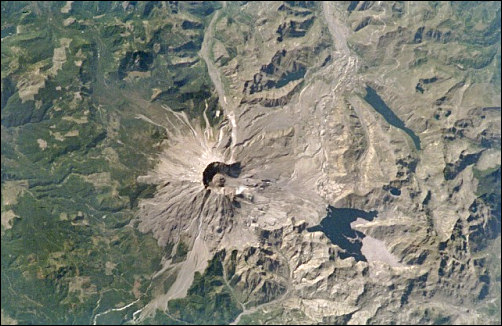

We've seen pictures of the devastation wrought by the eruption of Mount St. Helens and stood in awe at the destructive power exhibited. We are dumbfounded when told that the eruption was merely piddling, hardly worth mentioning in association with the great eruptions of the past. For example, Krakatau, an island between Java and Sumatra in Indonesia, blew in 1883 with such force that it was heard some 3000 miles away. Temperatures were lowered worldwide as ash circulating in the high atmosphere blocked much of the sun's heat, with temperatures not returning to normal until 1889. Distant eruptions have even left their marks on the Chihuahuan Desert.
As catastrophic as such events are, they are considered a good thing by
many geologists. Volcanic ash from ancient eruptions at Yellowstone, for example,
settled out over a wide area of the country, including our region. Ash from a specific
eruption often can be identified and dated, giving us a perfect tool for correlating
events far apart: a recognizable marker laid down over vast geographic areas over just
a few days.

Contributor: Arthur H. Harris, Laboratory for Environmental Biology, Centennial Museum, University of Texas at El Paso.
Desert Diary is a joint production of the Centennial Museum and KTEP National Public Radio at the University of Texas at El Paso.

Mount St. Helens, near-vertical shot from space, September 1994. View approximately to the west. The grayish areas to the right of the volcano are primarily pumice deposits emitted during the eruption of 18 May 1980. Photograph courtesy of NASA.